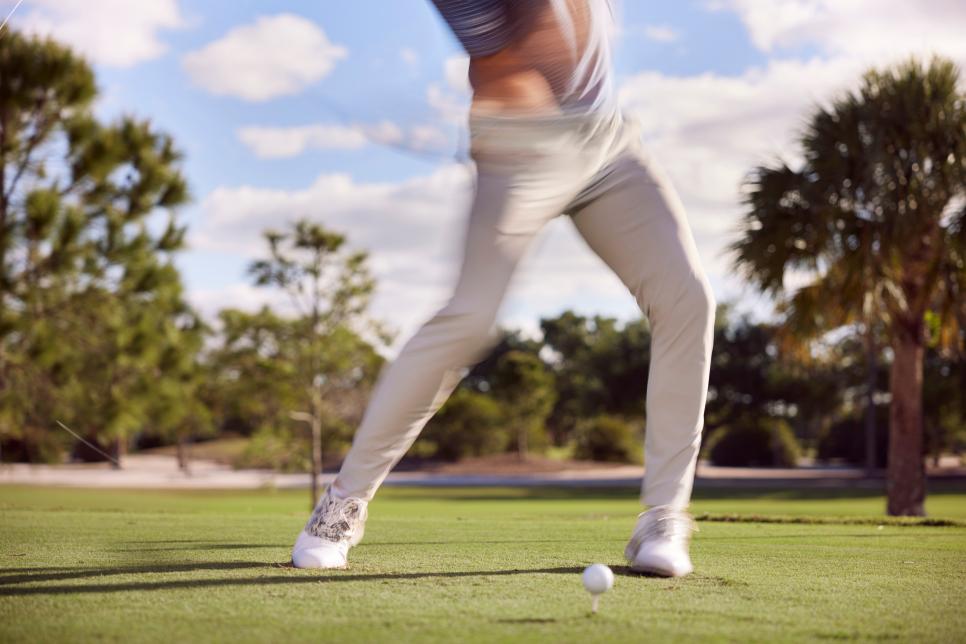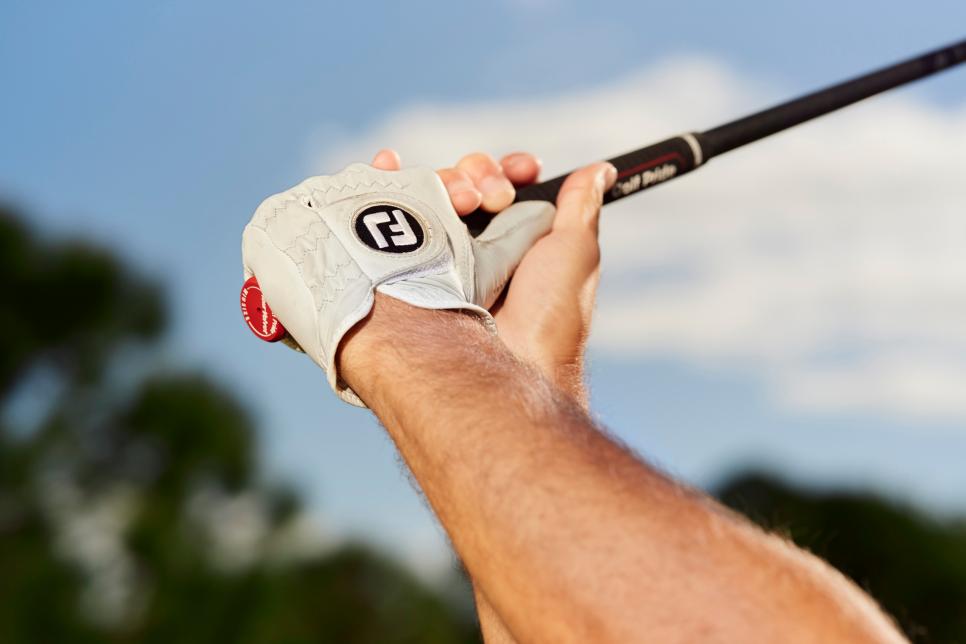Cover Story
The key ‘benchmarks’ behind Cam Young’s ultra-powerful golf swing

Photographs by Jesse Rieser
Every bomber seems to have a signature move. For Rory, it’s fast hips. For D.J., it’s the bowed left wrist. For Rahm, it’s the short backswing. What’s Cam Young’s thing? You might say it’s the pause before he starts his downswing. That’s tough to ignore. However, the more you see his swing, the more your attention goes to its explosiveness. Young swings like he’s trying to turn the ball into dust.
“He did everything hard growing up—threw hard, hit baseballs hard, his hockey slapshot was hard, and so is his golf swing,” says Cam’s father, David Young, the recently retired head golf professional at Sleepy Hollow Country Club in Briarcliff Manor, N.Y. David also is Cam’s coach. “It wasn’t something we worked on. He just naturally knew how to use his body to crank it.”

That raw power has been refined to find more fairways, but Young still cranks it, averaging 316 yards off the tee on the PGA Tour this year. Here father and son will reveal the components that create this power—and what you can take away for your game.

START WIDE AND STAY WIDE—BUT REMAIN CENTERED
Young’s setup and backswing are fairly standard among power players, and there’s a lot you can copy. His wide, stable stance is neutral in relation to the target (above, top left), which leads to more consistency.
“I use the term ‘benchmarks’ for things in his stance and swing that are easy to copy. We want as many of those as he can create,” David says. “Think about it, if you’re not square, how do you know from swing to swing if you’re starting from the same position?”
The main thing to pay attention to in this phase of Cam’s swing is the width of his swing arc. While amateurs tend to have a narrow arc, taking the club back mostly with their arms, Cam stays very wide by moving his arms and torso together (above, bottom left). The wider the arc, the more time the club has to pick up speed in the downswing.
Also, note how his upper body remains centered over his lower body (above, right). In the past, a tendency to move more laterally led to inconsistencies in his ball-striking. Amateurs frequently make the same mistake. Now Young coils with his “legs under him. That’s a good swing thought,” he says.
TURN BACK UNTIL YOUR BODY TELLS YOU TO STOP
Cam says he has “no idea” where his backswing ends and downswing begins, but David says it’s the “easiest place to find” if you’re looking to improve your consistency: “When your body is fully wound, you’ll know it.” From that moment, Cam pauses for a fraction of a second, then starts down with everything he’s got. “We never trained that pause, but it does help with timing and sequencing,”

David says. “For amateurs, I recommend trying it when you practice, even doing slow-motion drills where you feel very calm at the top of your swing.”
Another goal should be getting the club in position to swing down from inside the target line, not outside the line where the usual result is a weak, glancing hit. Note the space inside that Cam has created as he reaches the top (above).

STEPHEN DENTON
USE YOUR LEGS LIKE A SPRINTER
The most dynamic moves in Young’s swing come from his lower body, and if you can copy them even just a bit, you’ll pick up a lot more speed. First, as his upper body is completing the backswing, note how his right foot “pushes off the blocks like a sprinter’s,” David says. That trail-leg push (above) can provide a real boost to how fast you can move the club back down into the ball.
The second move is one that can help golfers who start down to the ball with their arms first, a common mistake. Cam says he sometimes works on getting his left hip quickly moving at the target. The effect is that his left knee goes from pointing inside the ball at the top of the swing to pointing a foot or more in front of it halfway down. Copying this knee action helps prevent an arm-dominant swing.

PUT A FIRM GRIP ON YOUR CLUB
If you think Young is gripping his driver as if he’s holding a baby bird, feel sorry for the bird. You might start from a tension-free address position with your arms and hands feeling relaxed, but to generate real speed on the way back down to the ball, you can’t hold onto the club like you’re afraid to break it, Cam says.
Because Cam’s body is largely supplying the energy of the strike, he needs a tight hold on the club to control it (above). Amateurs are often given the “light grip” advice to help release the club through the impact zone, but there’s no need for that hand action if you control your swing mostly with body rotation.

KEEP TURNING, BUT STAY BEHIND THE BALL TO LAUNCH IT
Young prefers a draw for extra yards and gets it by making sure his clubface is slightly closed (pointing left) of his inside-out swing path at impact. That closure comes from body rotation, not supination of the left forearm. “It’s much easier to repeat. It doesn’t require the split-second timing you need if you’re trying to close the clubface with your arms,” he says.
If you return to the photo that opened this article, you can see that Young, who is only 5-foot-11, 185 pounds, is delivering the full mass of his body into the strike. Here, his right shoulder is key, as it moves downward (above) while his torso falls away from the target. This allows the club to launch the ball high with less backspin—two things you’ll need to do to make this your longest year ever!



